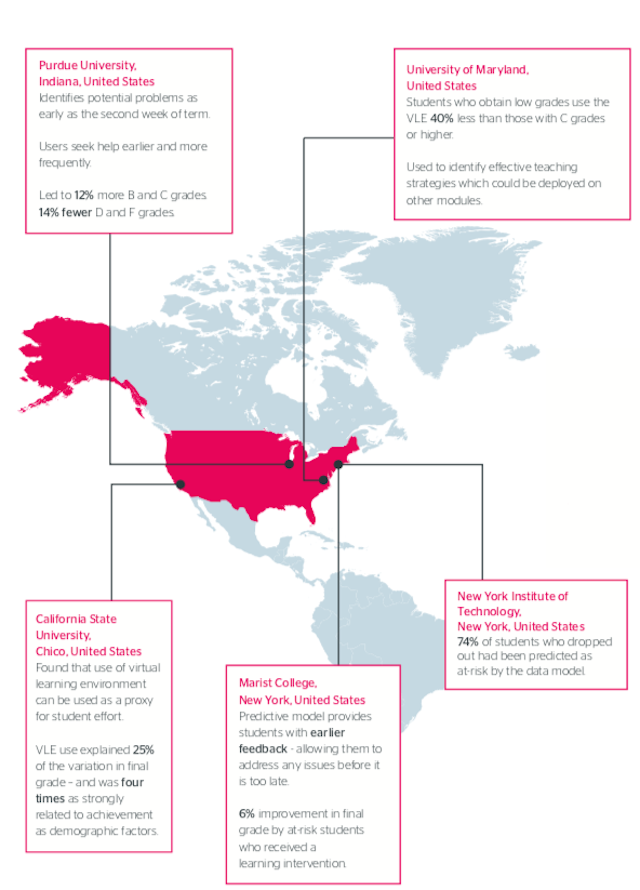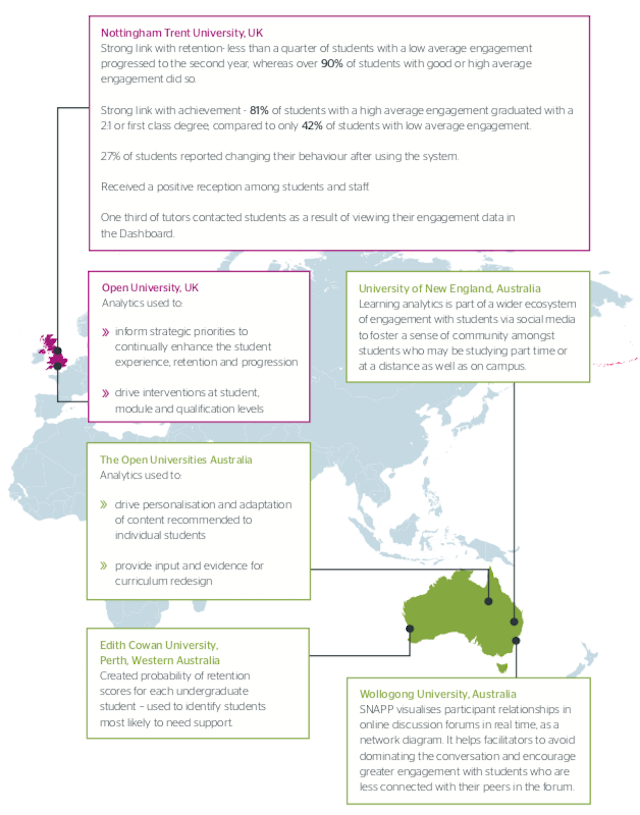2 Case Studies of Learning Analytics in Higher Education
In the last 7 years, the field of learning analytics has grown quickly, with researchers from various disciplines such as the Learning Sciences, Computer Science, Human-Computer Interaction, Psychology, and Behavioral Sciences contributing their perspectives on how to understand and optimize learning processes and environments (Ochoa, Hershkovitz, Wise, & Knight, 2017). The Society for Learning Analytics Research (SoLAR) holds annual international conferences on Learning Analytics and Knowledge (LAK) and Learning Analytic Summer Institutes (LASI), there is an open-access, peer-reviewed journal devoted to learning analytics, Journal of Learning Analytics (JLA) that has published two issues of leading-edge research articles a year since 2014.
The adoption of learning analytics around the world has been uneven. To date, the most large scale, systematic implementations of learning analytics has been in the US:

US institutions have already used learning analytics for student retention, course-level academic success, and reduced time to degree (Arroway, Morgan, O’Keefe, & Yanosky, 2016). Australia, normally a leader in adopting higher education innovations, is considered to be in the early stages of deploying learning analytics, and small-scale initiatives have focused on using learning analytics tools to boost student retention (Arroway et al., 2016). Sclater, Peasgood, and Mullan (2016) suggest that while there are a few high profile institutional level deployments and some promising examples of small-scale initiatives, the adoption of learning analytics in the UK is lagging behind efforts in the US and Australia:

Canadian universities and colleges have also lagged in adopting learning analytics. A recent report by Bates et al. (2017) found few if any references regarding learning analytics, adaptive learning, artificial intelligence, or competency-based learning in the recent national survey. These authors suggest that instructors and institutions are not averse to pedagogical innovation, but rather concede the difficulty of accurately tracking individual faculty use of learning analytics at the institutional level.
Images from Sclater, Peasgood, & Mullan (2016).

©JISC Published under a Creative Commons Attribution 4.0 International License.

